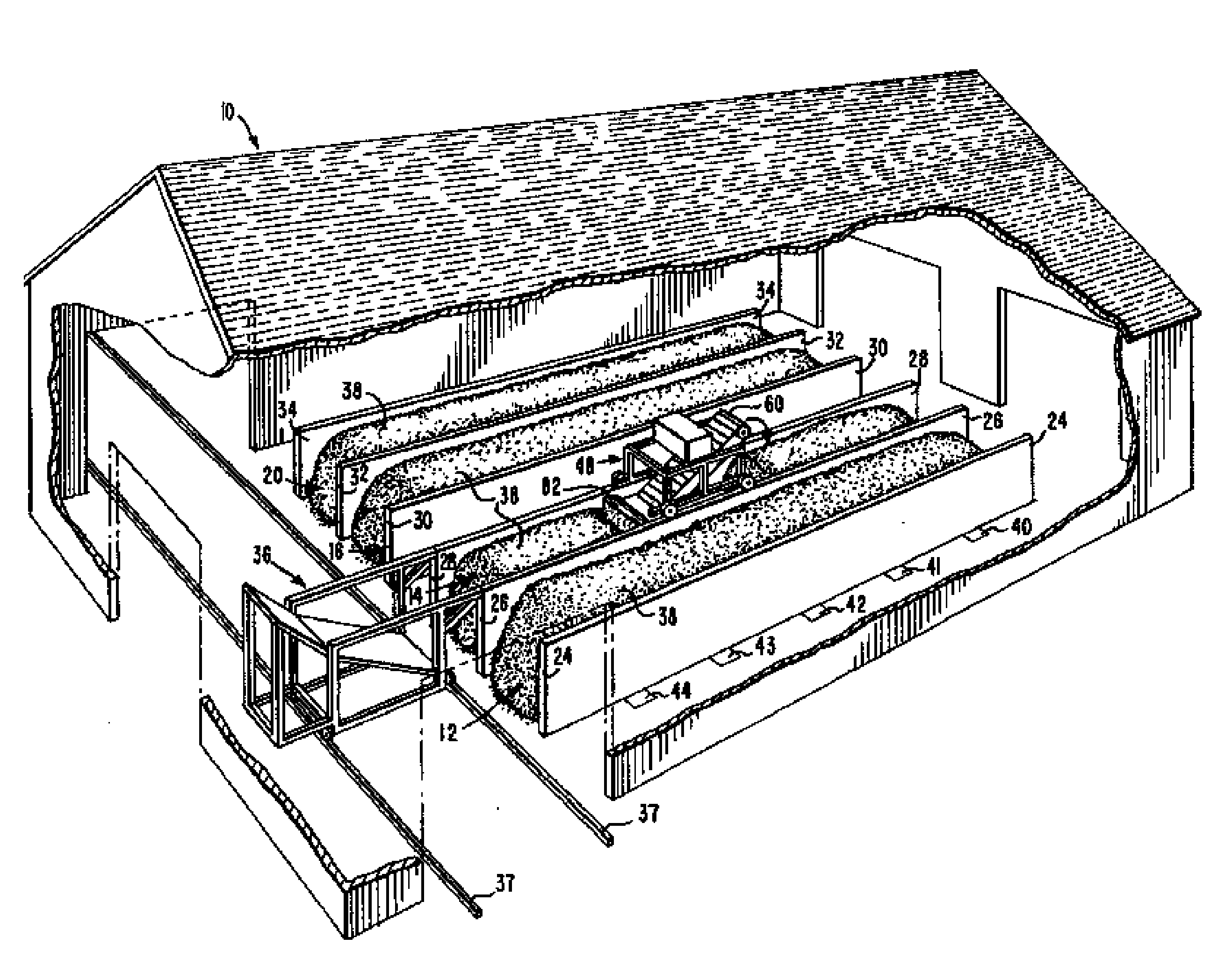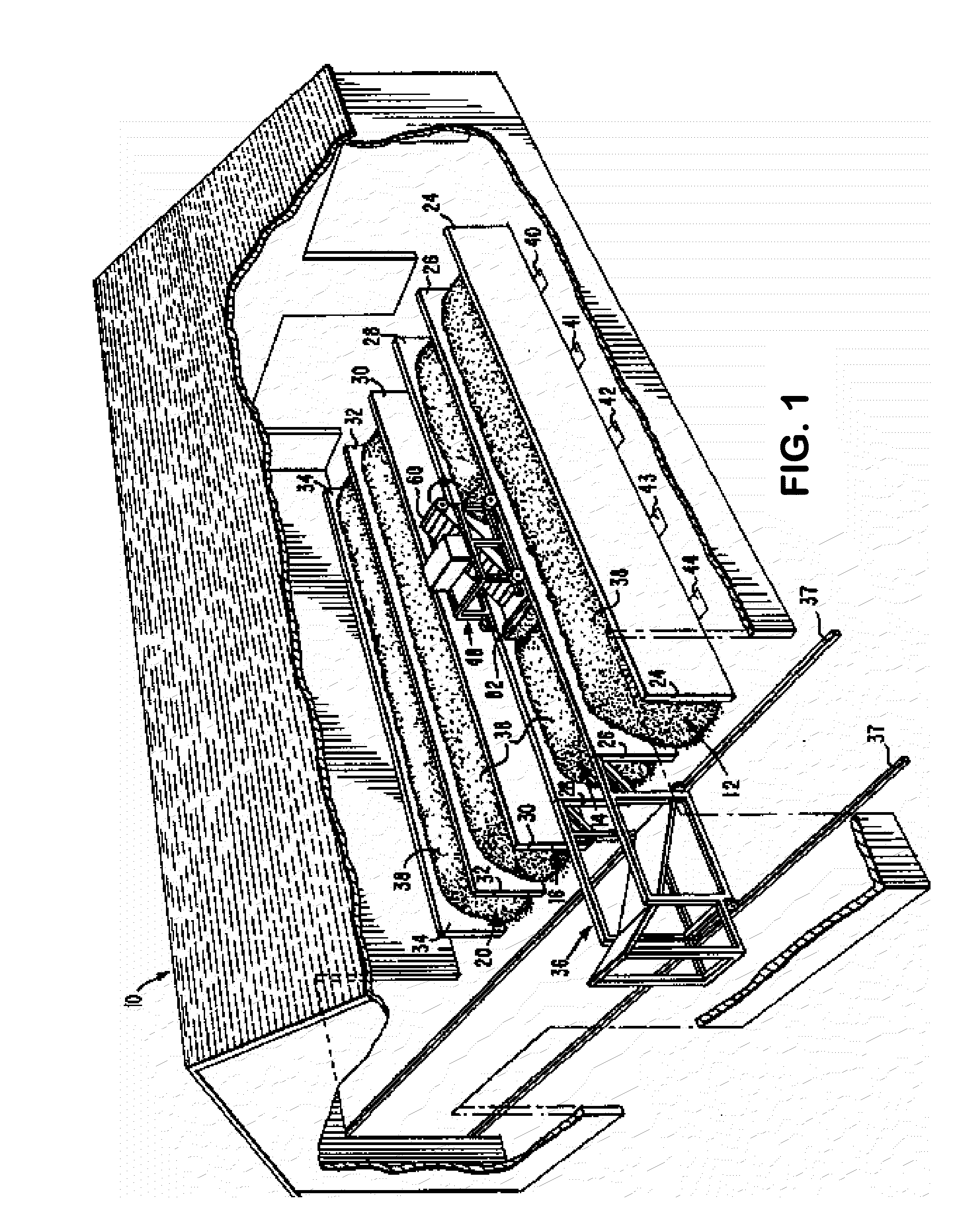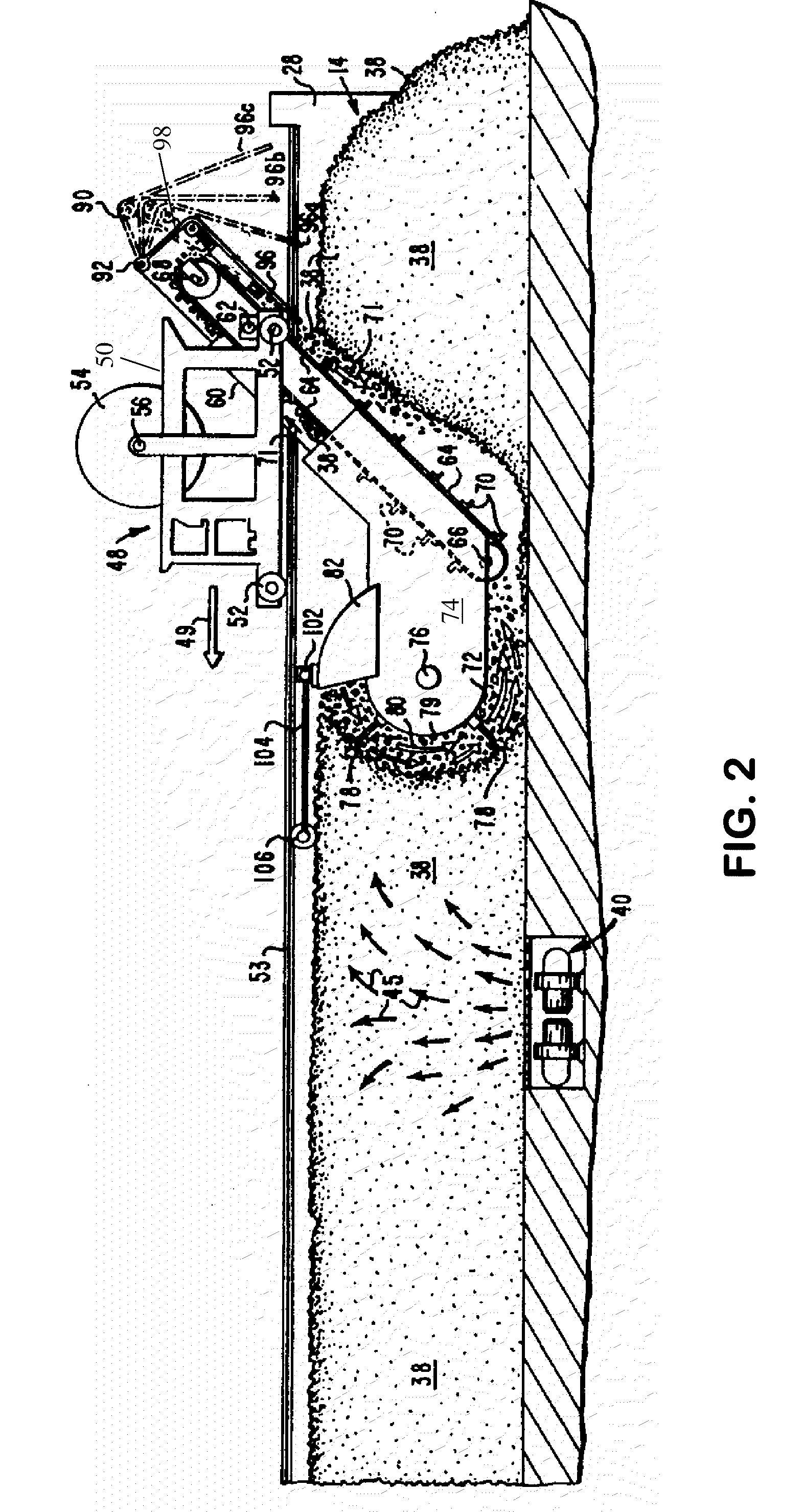Amendment-free sludge composting
a technology of amendment-free sludge and composting, which is applied in the direction of biomass after-treatment, fertiliser treatment control, heating/cooling of fertilizer, etc. it can solve the problems of slow degradation rate, undesirable odors or other environmental problems, and excess nitrogen supplied, so as to facilitate the formation of compost and increase the speed of the ventilation fan
- Summary
- Abstract
- Description
- Claims
- Application Information
AI Technical Summary
Benefits of technology
Problems solved by technology
Method used
Image
Examples
example
[0157]In the following Example, a two phase test was performed to evaluate composting (biodrying) in accordance with methods disclosed above. The test took place at a composting facility having four bays, each 67 meters (220 feet) long, 2 meters (6.6 feet) wide and 1.83 meters (6 feet) deep. At the end of the bays was a common discharge pit into which material would fall when exiting each of the bays. Each bay had five independent aeration zones (A-E) and each aeration zone had a dedicated blower and wall-mounted thermocouple. The thermocouples were used for process monitoring. The blowers were controlled in timer mode. The facility was equipped with an IPS™ 30 HP Narrow Bay agitator similar to that described in the disclosure above.
[0158]The phases of this Example described below were completed in a location at a time of year where temperatures averaged 21° C. (70° F.), with highs at about 26° C. (79° F.) during a first month and an average temperature of 24° C. (75° F.), and with ...
PUM
 Login to View More
Login to View More Abstract
Description
Claims
Application Information
 Login to View More
Login to View More - R&D
- Intellectual Property
- Life Sciences
- Materials
- Tech Scout
- Unparalleled Data Quality
- Higher Quality Content
- 60% Fewer Hallucinations
Browse by: Latest US Patents, China's latest patents, Technical Efficacy Thesaurus, Application Domain, Technology Topic, Popular Technical Reports.
© 2025 PatSnap. All rights reserved.Legal|Privacy policy|Modern Slavery Act Transparency Statement|Sitemap|About US| Contact US: help@patsnap.com



